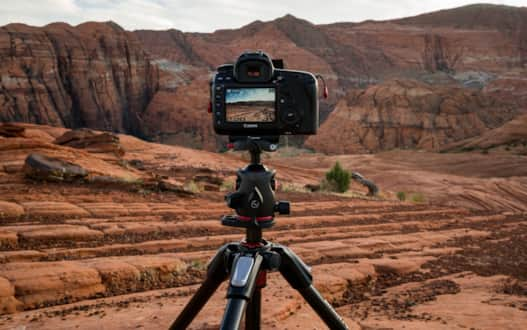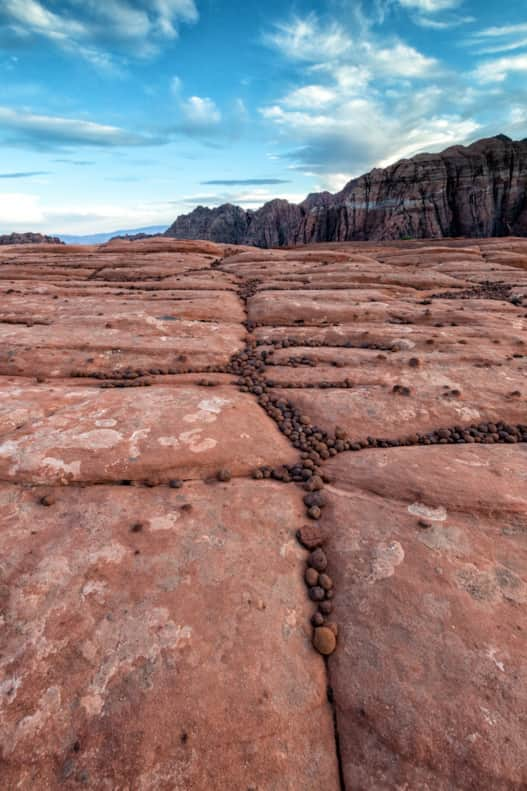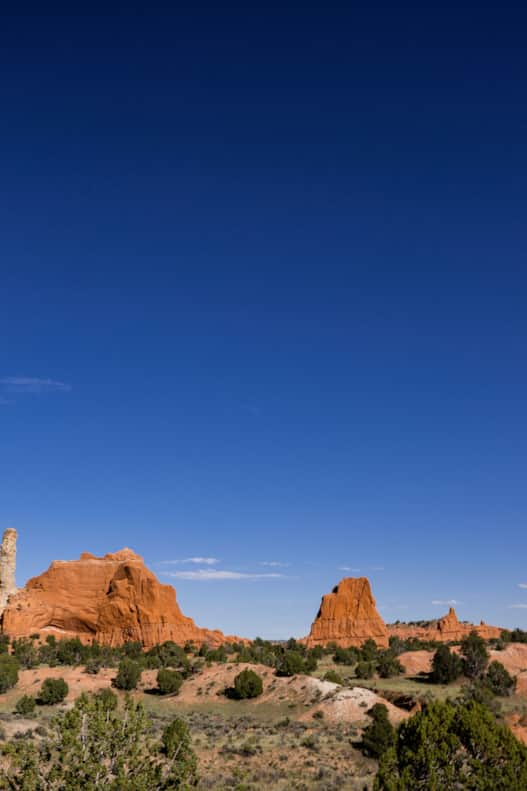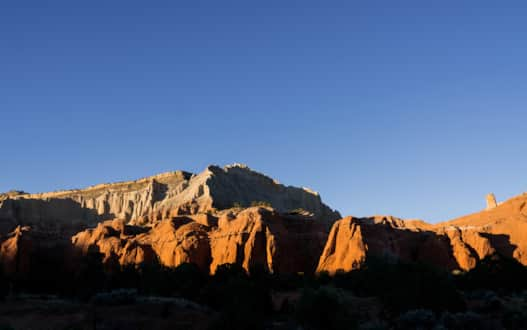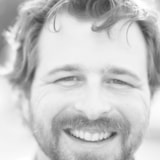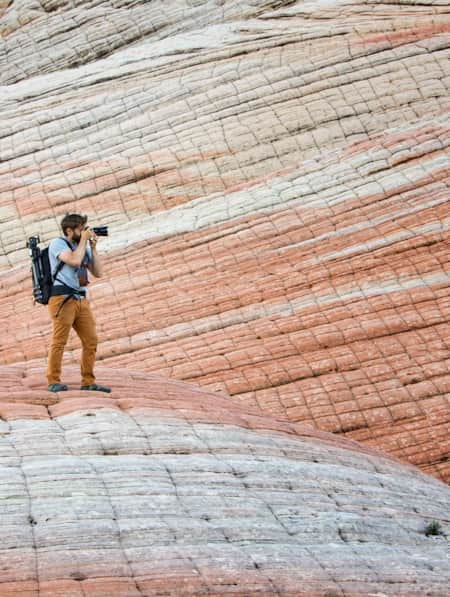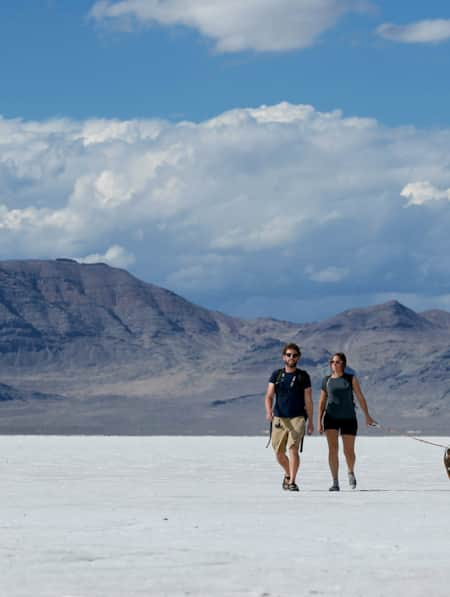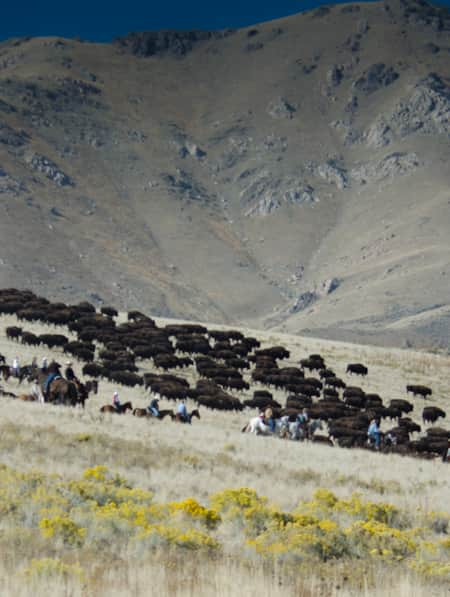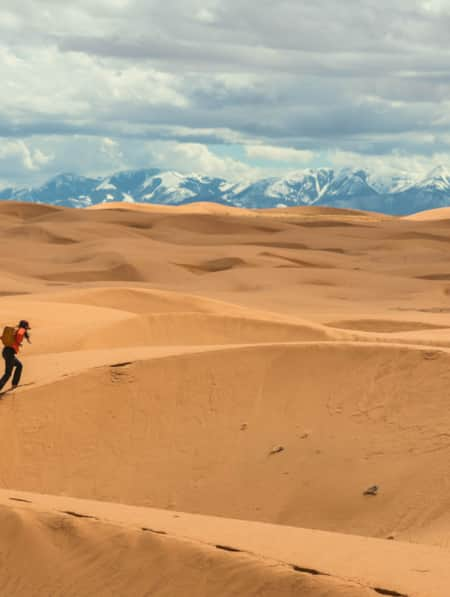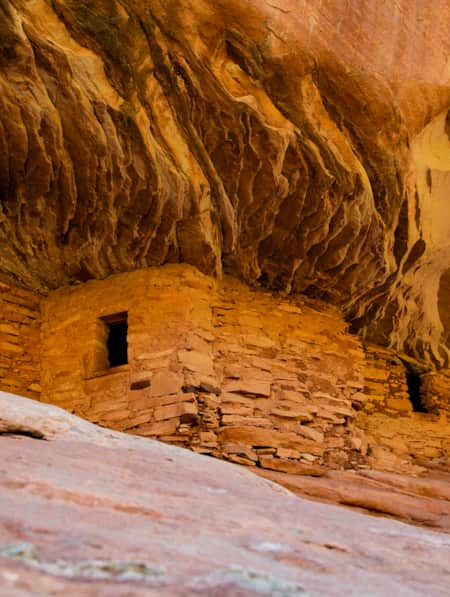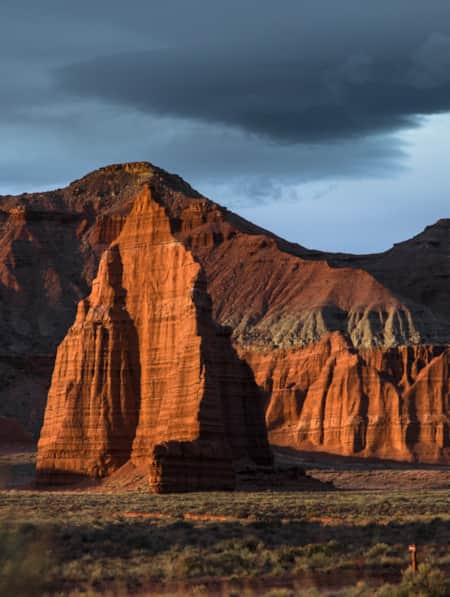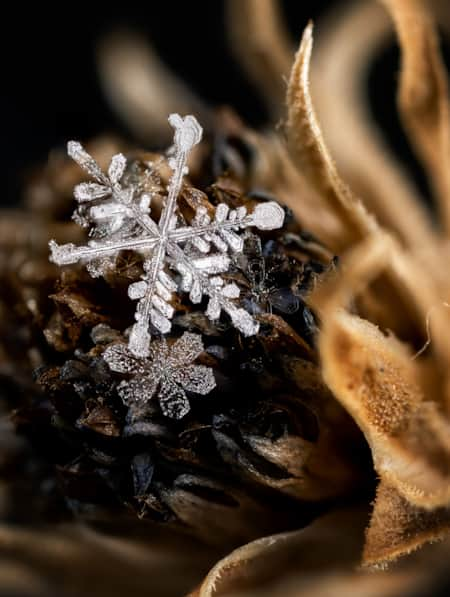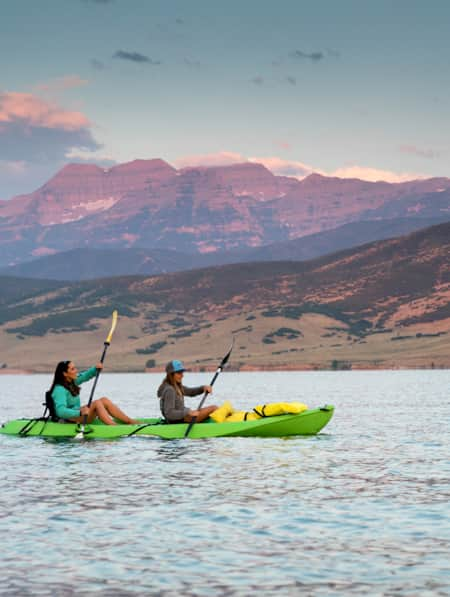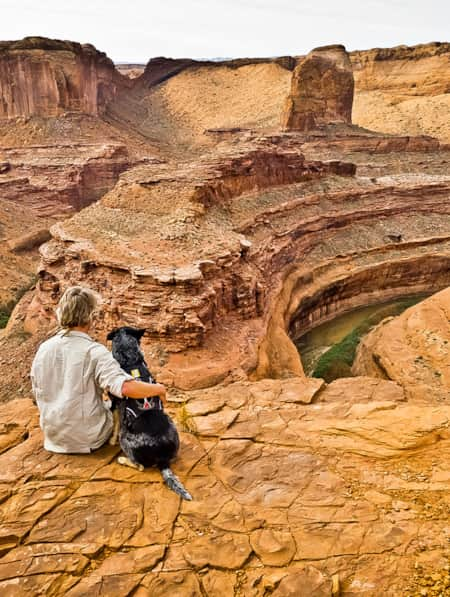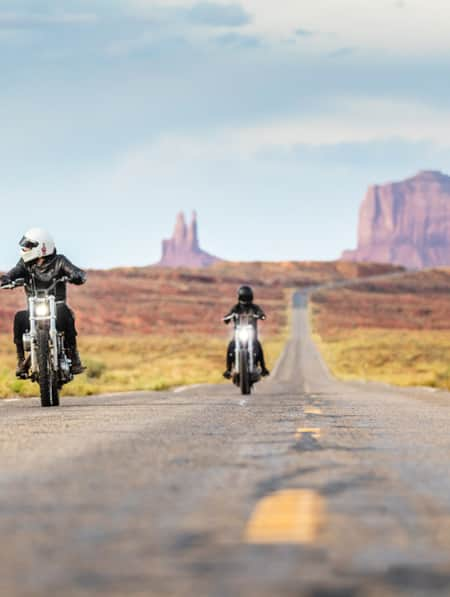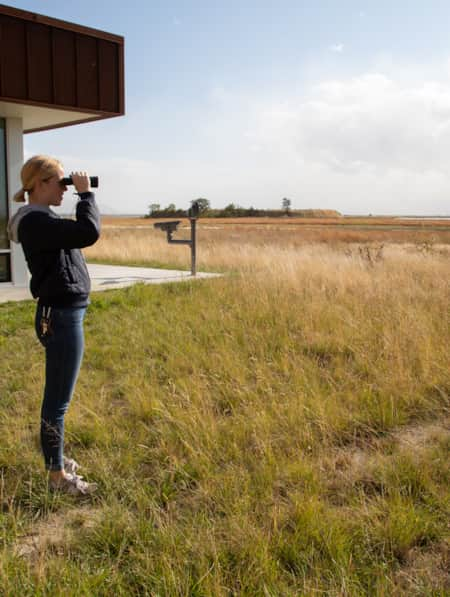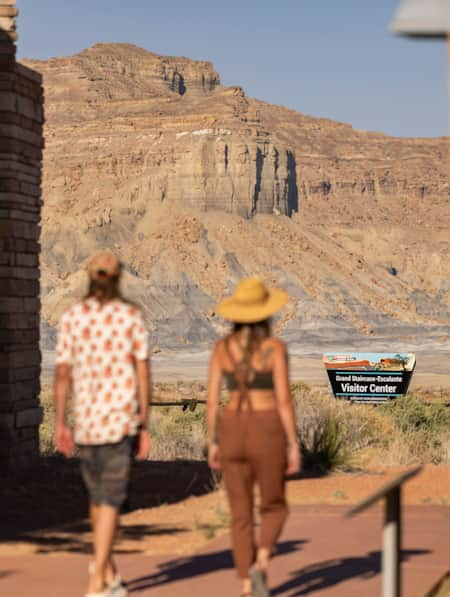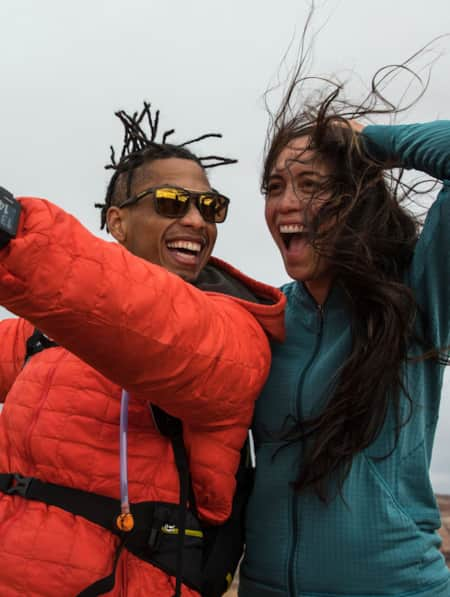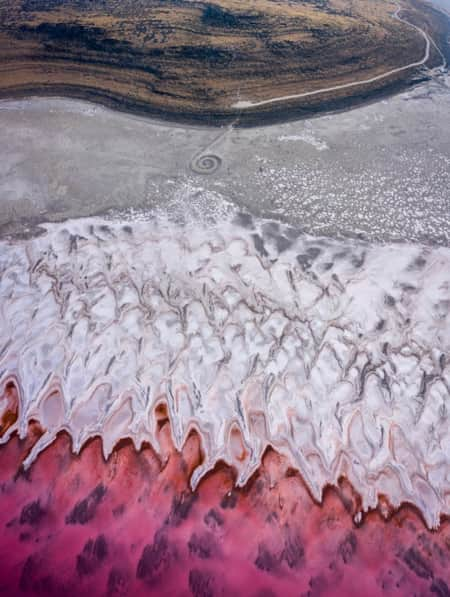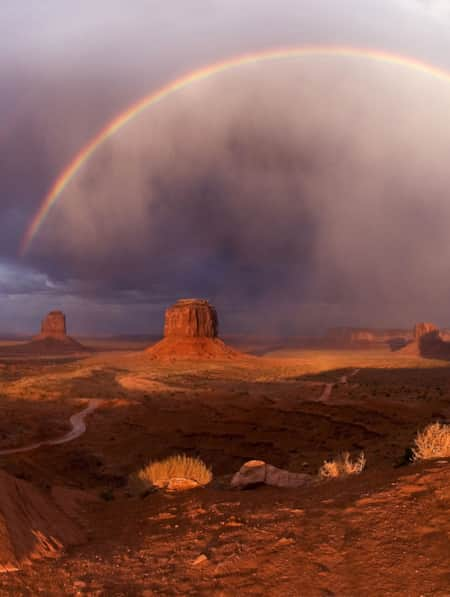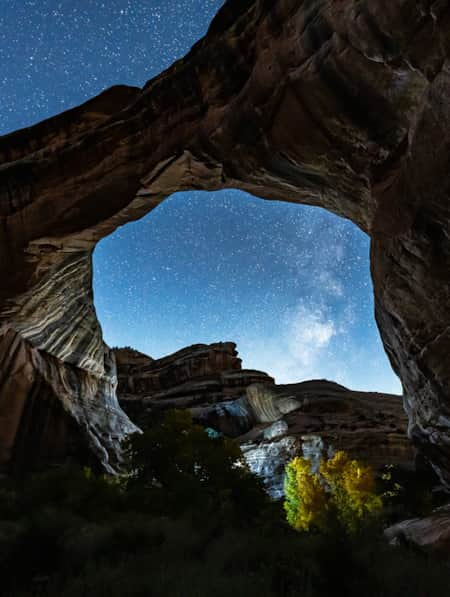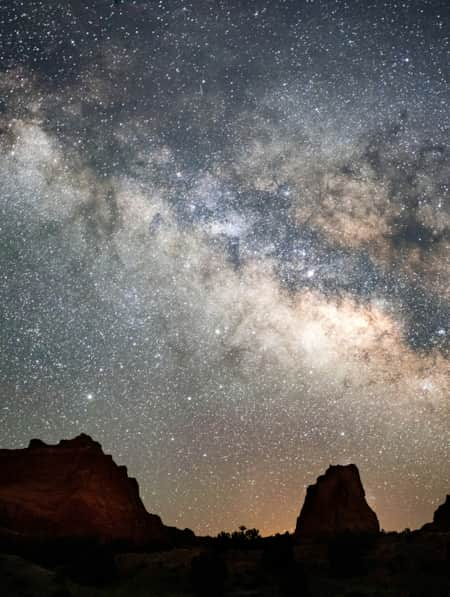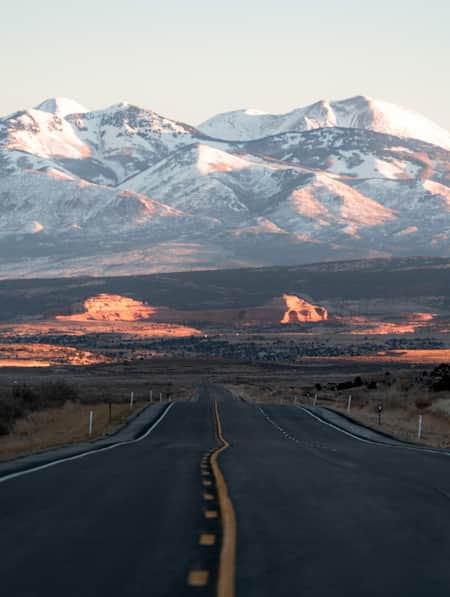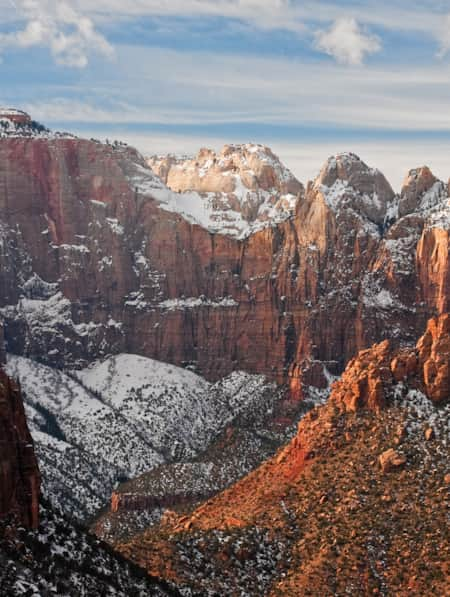Desert Shutter Speed
Getting the perfect shot is not even the point.
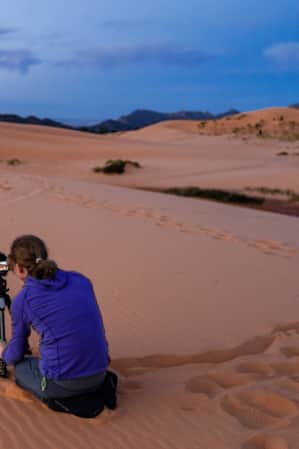
It is exactly zero dark thirty and Austen and Angie are racing through the desert. These two are always racing at weird hours, chasing celestial events — in this case, the sunrise at Coral Pink Sand Dunes State Park. Arriving at the park, last night’s prepacked gear is heaved out of the truck and the duo slow-mo sprints across the landscape, slogging as quickly as the fine sand underfoot will permit, to get into position for the light show to come.
Austen is Austen Diamond, a wedding and commercial photographer from Salt Lake City. Angie is Angie Payne, a former pro-climber and photographer from Boulder, Colorado. Although their day jobs are all about photography, it is this chase that they live for. It came as no surprise, then, when they chose to disappear together for a long weekend to indulge an obsessive passion for cramming Utah’s otherworldly beauty into the lenses of their cameras. Just because it’s there. Candles are burned at both ends examining sunrises, sunsets and chasing shadows on red rock walls before day turns to night and then stars emerge to blazon. On these trips, they run to stand still, surrounded amid wondrous beauty to watch the light change. And, in the watching, understand and discover much more than can ever be saved onto a digital memory card.
Day 1: Snow Canyon State Park
“Scouting is half the fun,” Austen muses to Angie as they stand on an overlook peering into Snow Canyon State Park, just outside of St. George. “That stupid road is in the way,” Angie replies in the friendly, distracted shorthand they use together. Basically, neither is listening to the other. They are both thinking about where the light is going to be in an hour-ish and plotting their approach to capture Snow Canyon’s petrified sand dunes at sunset. Driving down from their perch, water and gear are loaded up and they march onto the famed hard rock mounds that resemble flash-frozen piles of sand to explore further.
As the sun drops in the sky, each busies themselves with tripods and lens choices, quiet now that the light is changing, and the matter is at hand. Austen holds his flat palm up to the sky, counting the number of fingers between the sun and the top edge of the cliffs beyond — a photographer’s trick to guesstimate how long before the sun will disappear into the landscape. Meanwhile, Angie goes in search of “Moqui marbles,” small, nearly perfect spheres of rock that rattle around the Petrified Dunes Trail getting more and more perfectly spherical with each sanding roll.
Angie’s specialty is macro photography so Moqui marbles hold a particular fascination. Her eye finds vast landscapes in teeny things (Read: Winter Magic, Magnified). You could say she’s a see-the-trees-for-the-forest kind of girl. She never leaves home without her trusty knee pads to help her crawl around on the ground pointing her lens at the little things most of us tromp past on the way to the big things.
“Macro photography is so much like climbing,” Angie, who, by the way, was the first woman to ever climb a grade-v13 bouldering route, says. “It’s like working on a bouldering problem. You go back, over and over again and puzzle it out. I love getting lost in a couple of feet of nature.”
Austen, however, is a wide-angle guy; big sweeping vistas are the challenge. Creating a photo from a place like Snow Canyon that approximates the grandeur the human eye can absorb is no easy feat — as anyone who has pointed a camera at a human-dwarfing Southern Utah landscape and been disappointed by the resulting photo knows.
“It’s a magic trick,” he says. “There is no way to truly capture what these places actually look like, but we can use a little sleight of hand to trick the eye into seeing something very close.”
Both of their approaches are counting on that magic light that is set to arrive as soon as Austen’s finger-counting guesstimate comes to pass. And on this trip, Angie has set a goal to get out of her teeny-tiny comfort zone and try the big approach — to see the forest for the trees.
The light begins to pop, and the shutters start clicking. While the other park visitors, hikers and the quick-fix Instagram crowd shuffle off to their cars, Angie and
Austen keep at it, silhouettes of hunched figures and tripods atop the high rock mounds, slowly melding into twilight and the dark.
"'It’s a magic trick,' he says. 'There is no way to truly capture what these places actually look like, but we can use a little sleight of hand to trick the eye into seeing something very close.' "
– Austen Diamond
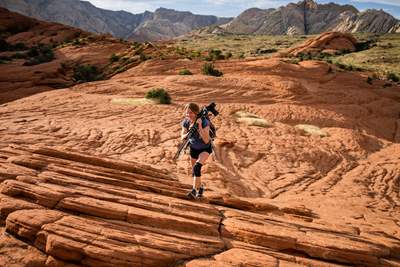
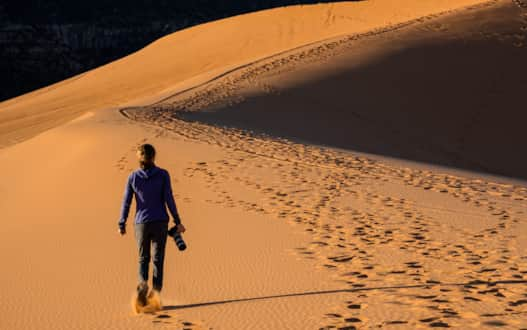
Coral Pink Sand Dunes State Park
Photo: Austen Diamond
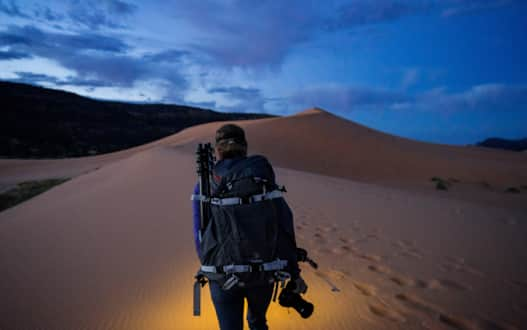
Coral Pink Sand Dunes State Park
Photo: Austen Diamond
Day 2: Coral Pink Sand Dunes State Park
That early morning race from nearby Kanab to the state park is about to pay off. Coral Pink Sand Dunes State Park is primarily prized by the ATV crowd, who play chicken with the giant mountain of sand that gives the park its name. But that crowd is not exactly known to be early risers and, at this hour, the dunes’ Sahara-esque profile is left to the photo dorks.
Angie sets up and then scurries around on the ground in pursuit of her little-world vision, while Austen takes a scout further up towards the bottom of the big dune, predicting how the coming sun will create contrast on the dune’s spine. As the sun rises, Austen appears to chide Angie who has gotten lost in a set of beetle tracks on the sand.
“You might want to photograph this giant Utah sand dune, since we’re here and all.”
“Fine” she harrumphs, clicking off a few more shots in good-humored protest before snapping her camera into her previously set tripod to examine the larger picture.
This Padawan-Jedi relationship is something that Angie welcomes from Austen. He is the more experienced photographer, at least at this landscape thing, and she wants to learn. This is the beauty of a trip like this. Photography is an art form, but it relies on a bag of technical tools and techniques. A painter is often only as good as the brushes they use and passing along the finer details to other photographers is part of the experience and fun.
“I give Austen a hard time, but I like that he pushes me to get out of my comfort zone,” Angie says. “I’m normally just doing my own thing. To get out with someone else gives me a challenge. I’m a retired professional climber, I need challenges.”
"'That’s what I love about this,' Angie says. 'We have to think about it and just be here and really consider everything around us. How often do we get to do that?' "
– Angie Payne
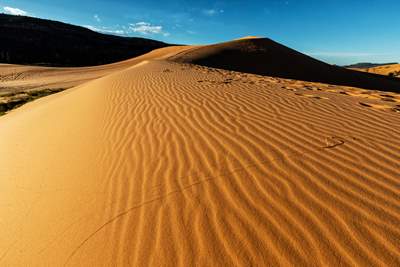
Day 3 — Kodachrome Basin State Park
The name of this park is more than apt for this expedition. Named after Kodachrome 64 — the versatile color slide film once prized by landscape photographers, now unnecessary in the digital age — Kodachrome as an identity remains an anachronistic beacon for photo nerds like Austen and Angie. Although the park is in proximity to a comfy Ruby’s Inn at the entrance to Bryce Canyon National Park, A&A decide to set up camp in anticipation of the late night to come. This particular foray is going to go late.
Astrophotography, the craft of capturing starry skies, is a highly technical form that consists of, basically, pointing a camera at the stars, opening the shutter for a long time and hoping for the best. There are tricks of the trade, however, and Angie is eager to learn from Austen. After camp is set, the scouting begins. Austen is enamored with a poorly named iPhone app called “PhotoPills.” The augmented reality app allows him to point his phone at a landmark like the Grand Parade, a famous set of fins that resemble a festive carnival and see what wonders will be above when the night sky emerges. Kodachrome Basin is one of the darkest places in Utah and, with no light pollution, its night skies are full of limitless combos for astrophotography.
Angie, however, wants to play the hits. The Milky Way is her goal, and after consulting the oracle inside that Photo Pills app, they hatch a plan that involves headlamps and a late-night hike. So, for now, it’s time to goof off back at camp. Beers are cracked as foil dinners sizzle on a bed of coals and ribald jokes about the phallic nature of many of Kodachrome Basin’s formations lead the way to more existential musings.
“Look at where we are,” Austen says. “Would we have just driven by? Maybe just gone for a quick hike if we weren’t trying to shoot the Milky Way?”
“That’s what I love about this,” Angie says. “We have to think about it and just be here and really consider everything around us. How often do we get to do that?”
That, that, Austen muses in response, is a lot like fishing. The goal is catching fish but it’s the standing in a river and watching it flow by and around that is the true prize. Fish stories, after all, are just that: fish stories. And a thousand photos crammed onto a memory card are just a bunch of ones and zeros.
The fire dwindles and the stars are out, the Earth spinning to meet the Milky Way. It’s time for Angie and Austen to stand beneath the night sky and marvel at how many stars they’d forgotten were there.
Learn more about Utah's dark sky parks.
Learn how to help take care of Utah's environment as a photographer.
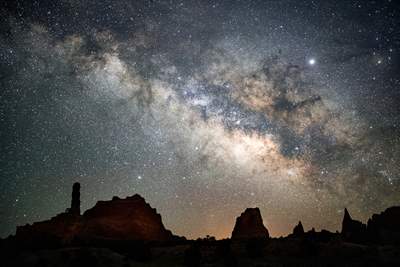
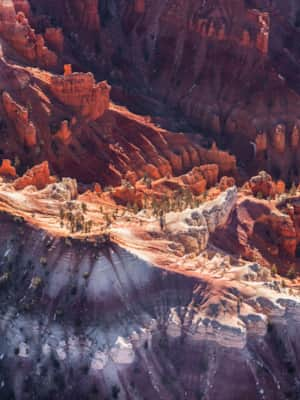
A Seaplane Journey Through Desert and Sky
Experience Southern Utah's incredible canyons from above with photographer Ryan Salm in a Searey Elite seaplane.
